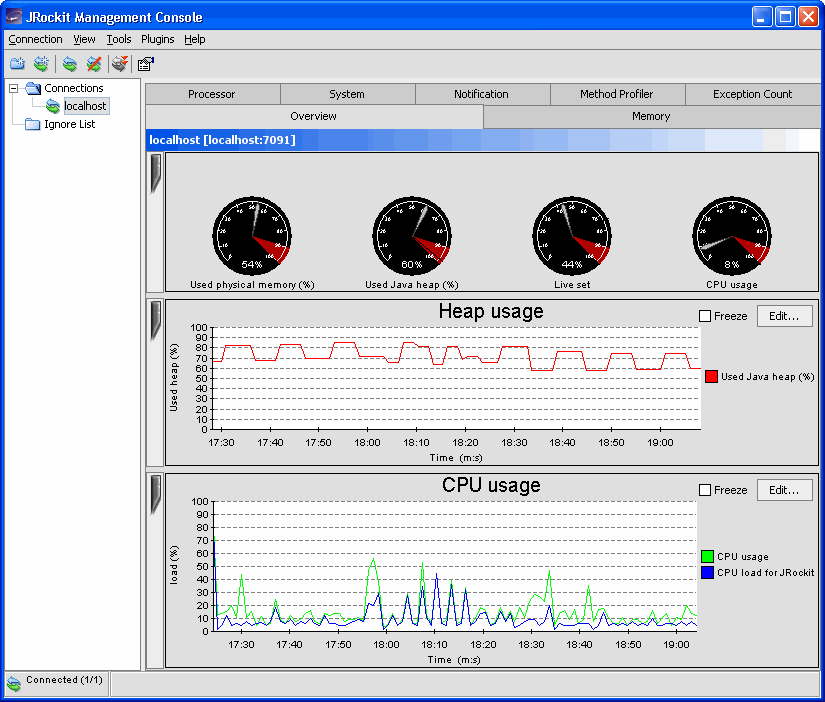









|
This section introduces the graphical elements of this interface (see Figure 4-1) and explains the basic elements.
 BEA JRockit JVM Management Console Window (when connected to JRockit)" id="wp1035768"/>
BEA JRockit JVM Management Console Window (when connected to JRockit)" id="wp1035768"/>
The BEA JRockit Management Console window is divided into two panes: a connection browser tree in the left pane (Figure 4-2) and a tabbed information pane in the right (Figure 4-5).
In the connection browser (Figure 4-2) you administrate the different connections that you have to running JRockits. The Ignore List contains connections to other JVMs that have either been set up by you or detected in the network.

The toolbar (Figure 4-3) contains the most used tools of the Management Console: new connections folder, new connection, connect, disconnect, and preferences.
| Note: | You need to create a connection before you see a list of connections. See Creating a New Connection for information on how to create a connection. |

The status bar (Figure 4-4) at the bottom of the window displays informational messages and tool tips when you hover over a toolbar button or select something in a menu. It also indicates whether or not the BEA JRockit Management Console is connected to one or several BEA JRockit JVM implementations.

To turn off the Status Bar, select View > Status Bar.
You can run the Management Console in two different modes: Administrator (see Figure 4-5) and Developer (see Figure 4-6) mode. The default mode is the Developer mode. To switch between the two modes, see Mode of Operation.
The first tab shows an Overview of information for the selected BEA JRockit JVM connection(s) (as highlighted in the connection browser pane). The other tabs contain detailed information about different areas of the VM, as will be described in Using the BEA JRockit Management Console.

When the console is in the Developer mode, additional tabs appear, as shown in Figure 4-6. For a full description of the different tabs, see Using the BEA JRockit Management Console.



|